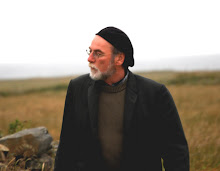"I want to be a journalist, like Ajmal. I am a good storyteller."
The high street in Barakey, one of the poorer sections of Kabul, is now called Ajmal Naqeshbandi Road. Its whirling and chaotic traffic circle is called Ajmal Naqeshbandi Square and, in the neighbourhood's old cemetery, the most prominent shrine is devoted to the same Ajmal Naqeshbandi.

Naqeshbandi was executed by the Taliban in the spring of 2007. He was 26 years old. The inscription above his raised stone coffin reads, in Dari: "He was kind to his people, and was intolerable to the enemies of Afghanistan. Ajmal Naqeshbandi will always be remembered with honour by the people of Afghanistan."
Ajmal was kidnapped along with the Italian journalist with whom he was working -- Daniele Mastrogiacomo of La Repubblica -- and Mastrogiacomo's driver, Sayed Agha, in Helmand province, on March 5, 2007. A few days later, Agha was murdered on charges he was "spying for foreign troops." To ransom Mastrogiacomo, President Hamid Karzai agreed to release five ranking Taliban prisoners. But Karzai refused to ransom Ajmal, who was beheaded on April 8, 2007.
There was an uproar. The Naqeshbandi family says the Afghan government ended up paying a ransom of $30,000 and a Toyota land cruiser for Ajmal's remains, which had been left in the desert for three days. The body was returned to the family, in Kabul, with its head sewn back on.
I visited Ajmal's shrine with Ajmal's cousin, Baktash Muqim. . .
- from the latest in a series of my essays appearing in the Calgary Herald. A Herald reporter, Michelle Lang, was killed by a roadside bomb in Afghanistan last year. She'd planned to meet ordinary Afghans like Baktash. The series is in her honour.

Naqeshbandi was executed by the Taliban in the spring of 2007. He was 26 years old. The inscription above his raised stone coffin reads, in Dari: "He was kind to his people, and was intolerable to the enemies of Afghanistan. Ajmal Naqeshbandi will always be remembered with honour by the people of Afghanistan."
Ajmal was kidnapped along with the Italian journalist with whom he was working -- Daniele Mastrogiacomo of La Repubblica -- and Mastrogiacomo's driver, Sayed Agha, in Helmand province, on March 5, 2007. A few days later, Agha was murdered on charges he was "spying for foreign troops." To ransom Mastrogiacomo, President Hamid Karzai agreed to release five ranking Taliban prisoners. But Karzai refused to ransom Ajmal, who was beheaded on April 8, 2007.
There was an uproar. The Naqeshbandi family says the Afghan government ended up paying a ransom of $30,000 and a Toyota land cruiser for Ajmal's remains, which had been left in the desert for three days. The body was returned to the family, in Kabul, with its head sewn back on.
I visited Ajmal's shrine with Ajmal's cousin, Baktash Muqim. . .
- from the latest in a series of my essays appearing in the Calgary Herald. A Herald reporter, Michelle Lang, was killed by a roadside bomb in Afghanistan last year. She'd planned to meet ordinary Afghans like Baktash. The series is in her honour.





1 Comments:
"Naqeshbandi was executed by the Taliban in the spring of 2007."
No he was not. He was murdered.
Post a Comment
<< Home